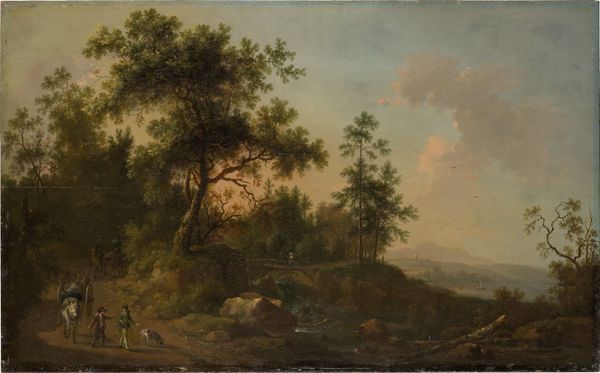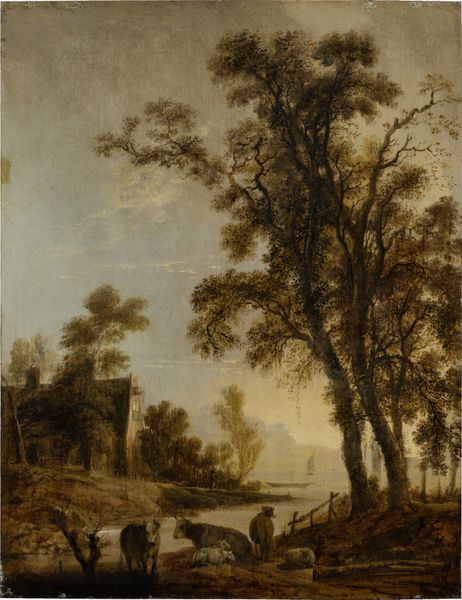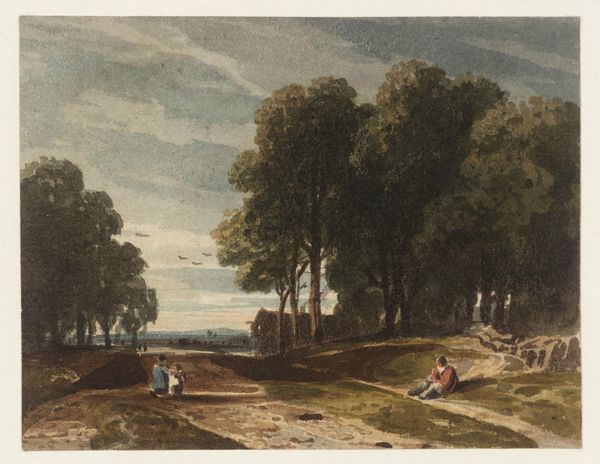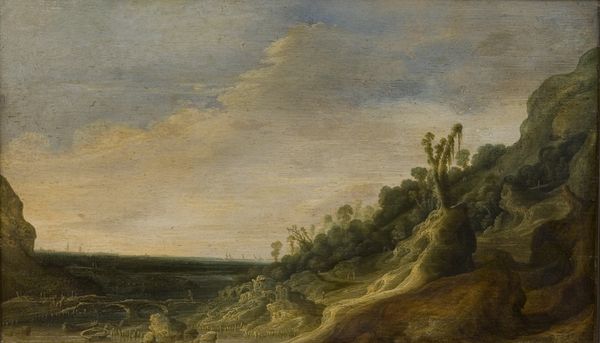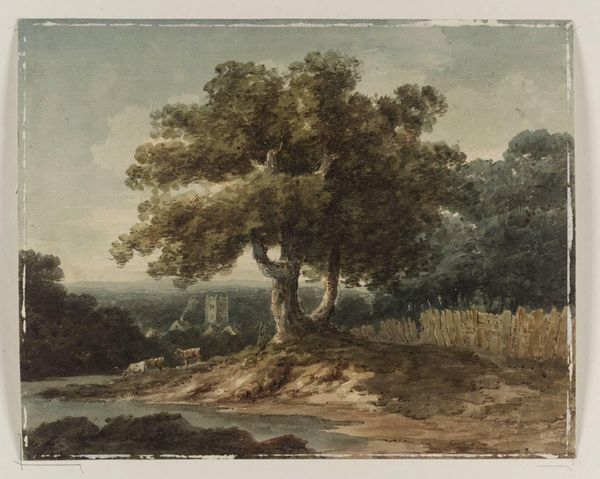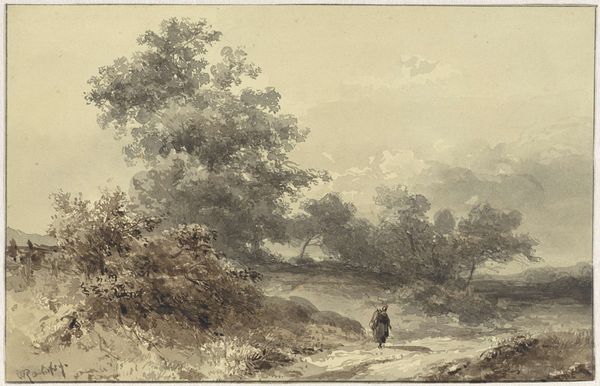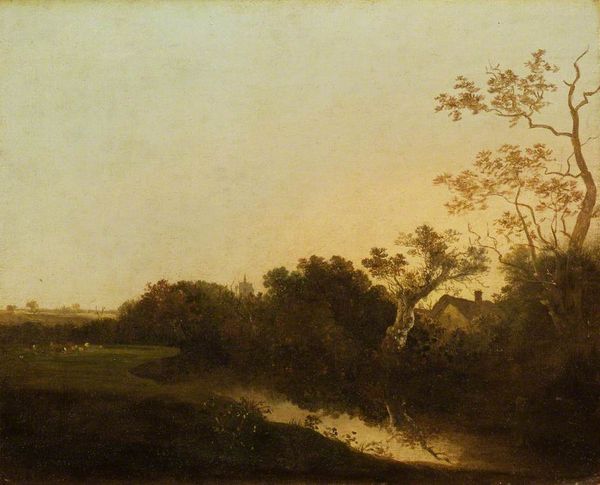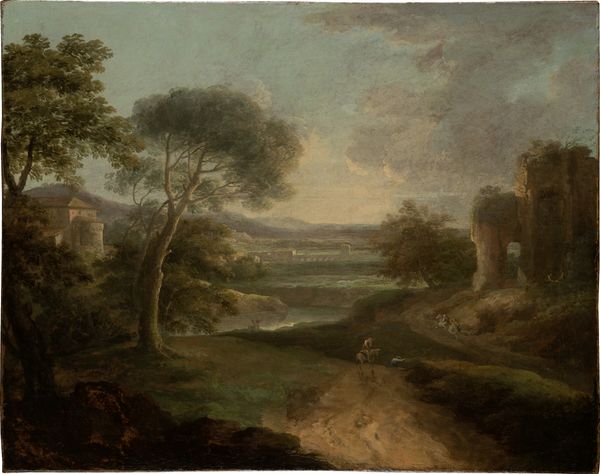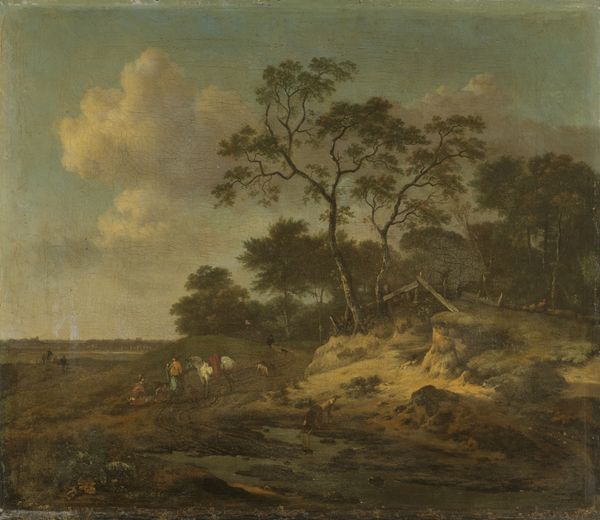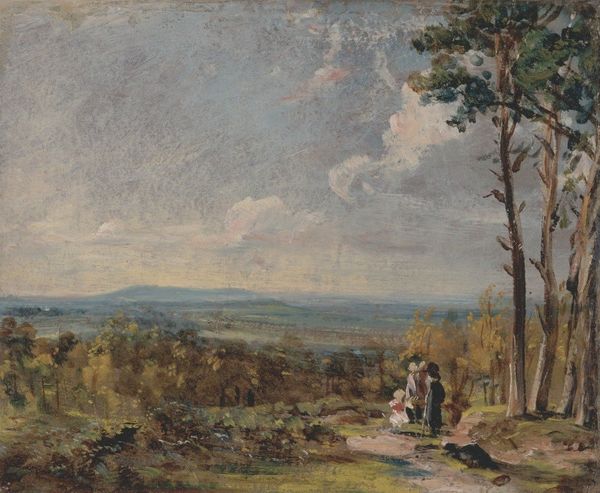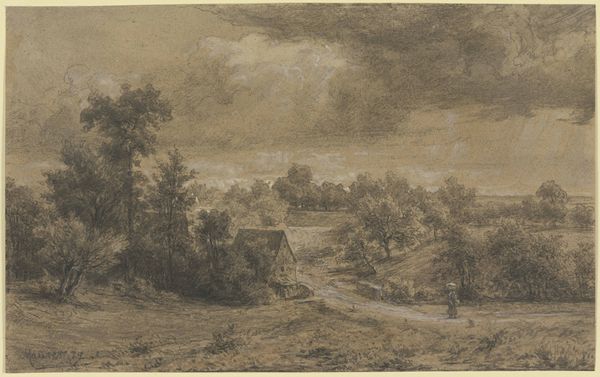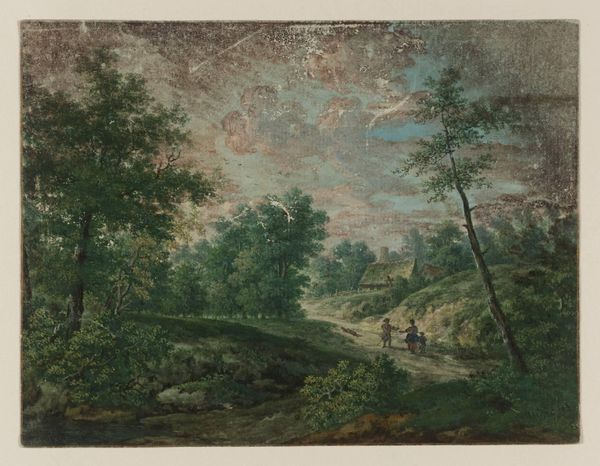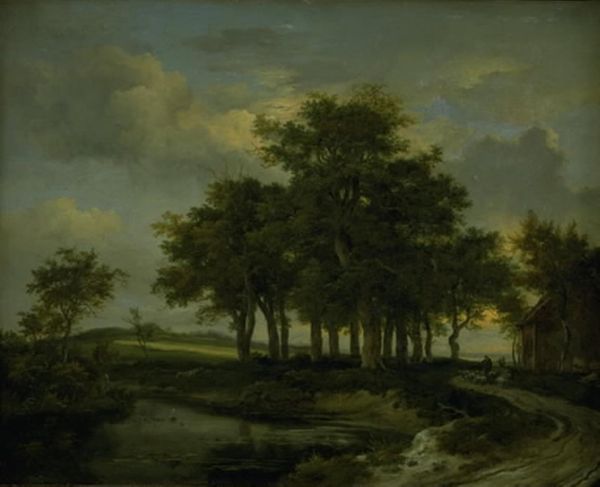
Dimensions: support: 215 x 266 mm
Copyright: CC-BY-NC-ND 4.0 DEED, Photo: Tate
Curator: Here we have "Dedham Vale," a work from the British School, likely painted sometime in the 18th century. Editor: It's quite melancholic, actually. That lone figure walking away, the looming church tower in the distance...it feels like a departure. Curator: Indeed. The image taps into the rising aesthetic of the picturesque that was becoming fashionable, which prioritized natural beauty filtered through a lens of classical composition. Editor: The tower is particularly potent. Its verticality seems to emphasize a kind of reaching for the divine, juxtaposed with the horizontal pull of the landscape. Curator: And the artist captures the political landscape as well: the enclosure movement reshaped land ownership and access during this period. Editor: A reminder that even the most serene landscapes often conceal complex narratives. Curator: Precisely. The painting asks us to consider what we project onto the land, both then and now. Editor: It makes one reflect on how we are all travelers through our own landscapes.
Comments
tate 7 months ago
⋮
http://www.tate.org.uk/art/artworks/british-school-18th-century-dedham-vale-d04173
Join the conversation
Join millions of artists and users on Artera today and experience the ultimate creative platform.
tate 7 months ago
⋮
This little oil, quite probably painted from nature, may be dated to the end of the eighteenth century. It belongs to the Turner Bequest, but is clearly not by Turner himself. Its style combines reminiscences of Richard Wilson in the creamily painted distances and of Alexander and J.R.Cozens in the fir trees on the left, with a more advanced looseness of touch and brightness of tone. As the subject is definitely Dedham, seen from Langham with the Stour estuary in the distance, it may have served to remind Turner of the characteristic imagery that Constable drew direct from nature. Gallery label, August 2004
